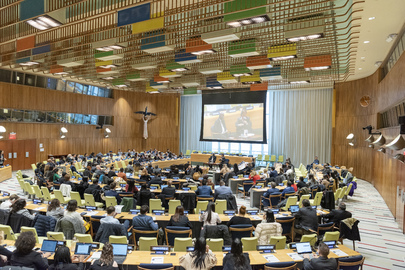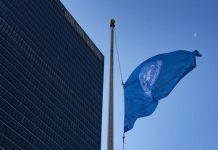This is according to a new report from the UN Convention to Combat Desertification (UNCCD), the U.S. National Drought Mitigation Center (NDMC) and the International Drought Resilience Alliance on the global impacts of droughts from 2023 to 2025.
“Drought is a silent killer. It creeps in, drains resources, and devastates lives in slow motion. Its scars run deep,” said UNCCD Executive Secretary Ibrahim Thiaw.
“This is not a dry spell,” stressed Dr. Mark Svoboda, report co-author and NDMC Director. “This is a slow-moving global catastrophe, the worst I’ve ever seen. This report underscores the need for systematic monitoring of how drought affects lives, livelihoods, and the health of the ecosystems that we all depend on.”
Record devastation in Africa
According to the report, as 90 million people face acute hunger across Eastern and Southern Africa, some areas in the region have been experiencing the worst drought ever recorded.
In Ethiopia, Zimbabwe, Zambia and Malawi, maize and wheat crops have suffered repeated failures. In Zimbabwe in particular, the 2024 corn crop was down 70 per cent year on year, maize prices doubled, and 9,000 cattle died of thirst and starvation.
Some 43,000 people in Somalia died in 2022 alone due to drought-linked hunger. The crisis continued through 2025, with a quarter of the population facing crisis-level food insecurity at the beginning of the year.
As a result of drought, Zambia is suffering one of the world’s worst energy crises: in April, the Zambezi River plummeted to 20 per cent of its long-term average, and the country’s largest hydroelectric plant, the Kariba Dam, fell to 7 per cent generation capacity, causing electricity blackouts of up to 21 hours a day. This has led to the shuttering of hospitals, bakeries, and factories, further compounding the devastation.
Worldwide impacts
But the effects of drought extend beyond Africa. For example, by September 2023 in Spain, two years of drought and record heat caused a 50 per cent drop in the olive crop, doubling olive oil prices nationwide.
In Türkiye, drought-accelerated groundwater depletion has triggered sinkholes, endangering communities and their infrastructure while reducing aquifer storage capacity.
In the Amazon Basin, record-low river levels in 2023 and 2024 led to mass deaths of fish and endangered dolphins, disrupted drinking water supplies and created transport challenges for hundreds of thousands. Ongoing deforestation and fires also threaten to shift the Amazon from a carbon sink to a carbon source.
Declining water levels in the Panama Canal slashed transit by more than one-third, leading to major global trade disruptions. Among the spillover effects were declines in American soybean exports and shortages and rising prices reported in UK grocery stores.
Call for cooperation and solutions
The report listed several recommendations to help combat this crisis, including stronger early warning systems, real-time drought and drought impact monitoring, and nature-based solutions such as watershed restoration and indigenous crop use.
It also called for more resilient infrastructure – including off-grid energy and alternative water supply systems – and global cooperation, particularly regarding transboundary river basins and trade routes.
Source of original article: United Nations (news.un.org). Photo credit: UN. The content of this article does not necessarily reflect the views or opinion of Global Diaspora News (www.globaldiasporanews.com).
To submit your press release: (https://www.globaldiasporanews.com/pr).
To advertise on Global Diaspora News: (www.globaldiasporanews.com/ads).
Sign up to Global Diaspora News newsletter (https://www.globaldiasporanews.com/newsletter/) to start receiving updates and opportunities directly in your email inbox for free.






























